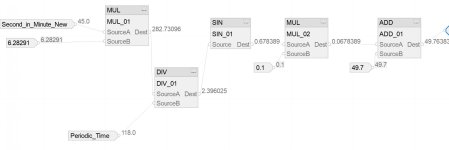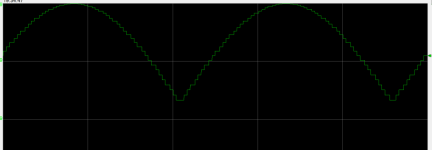Hi dear forum,
I need to create a test sine wave that so that I could check settling time in bidirectional inverters.
Function that needs to run on my Compact Logix L33ER
F=49.7 + 0.1 Sin( (2*PI*t )/ T)
So I already learnt about the 2*PI*60 (0.1649) factor in previous threads to avoid the Roll Over Fault when using seconds as sampling. However I try to alter the Sample interval T from 10- 200 sec.
Still get glitches and i was curious if anybody on the forum would help.
Very grateful for any directions to reach further to goal.
I have attached trends from T=20 and T=118s



I need to create a test sine wave that so that I could check settling time in bidirectional inverters.
Function that needs to run on my Compact Logix L33ER
F=49.7 + 0.1 Sin( (2*PI*t )/ T)
So I already learnt about the 2*PI*60 (0.1649) factor in previous threads to avoid the Roll Over Fault when using seconds as sampling. However I try to alter the Sample interval T from 10- 200 sec.
Still get glitches and i was curious if anybody on the forum would help.
Very grateful for any directions to reach further to goal.
I have attached trends from T=20 and T=118s








